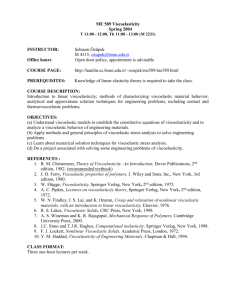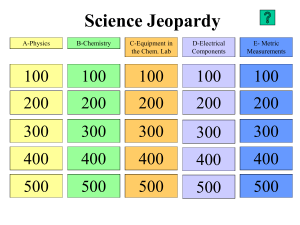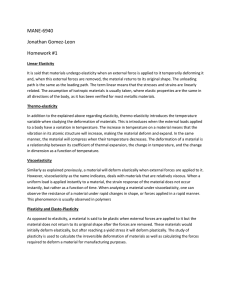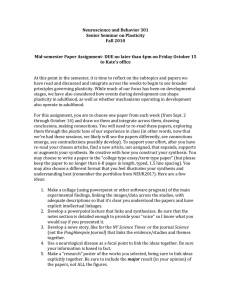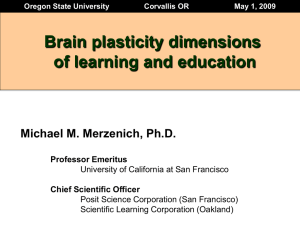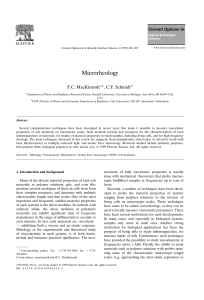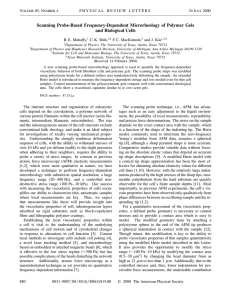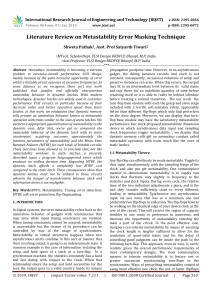Viscoelastic behavior of living cells investigated with atomic force microscopy
advertisement
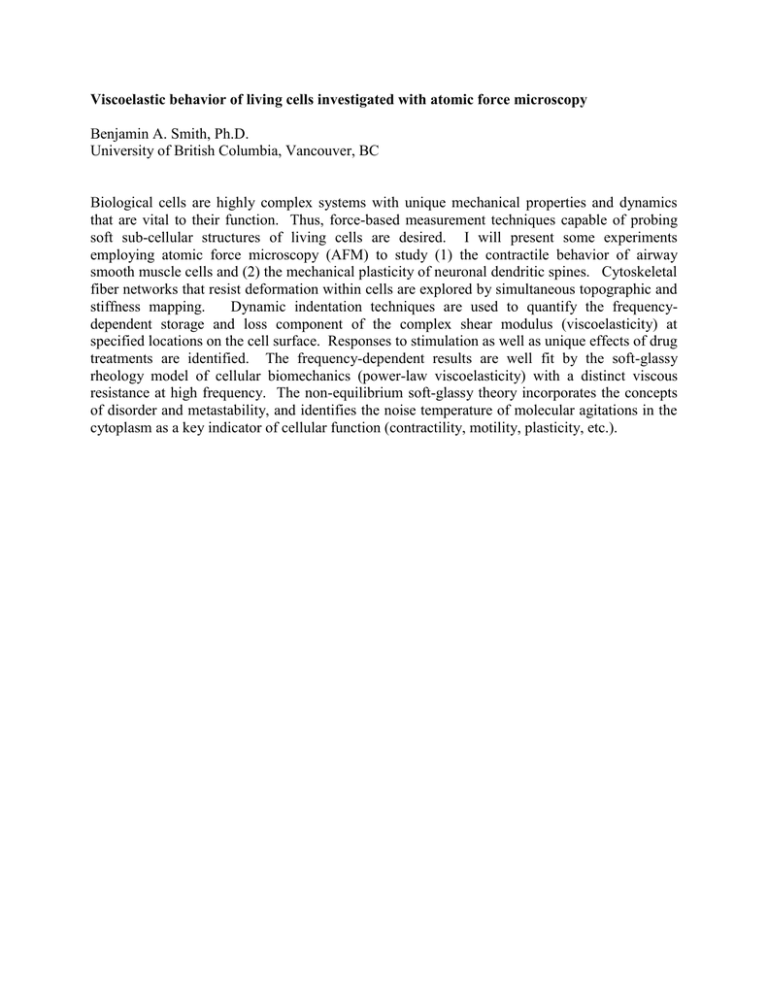
Viscoelastic behavior of living cells investigated with atomic force microscopy Benjamin A. Smith, Ph.D. University of British Columbia, Vancouver, BC Biological cells are highly complex systems with unique mechanical properties and dynamics that are vital to their function. Thus, force-based measurement techniques capable of probing soft sub-cellular structures of living cells are desired. I will present some experiments employing atomic force microscopy (AFM) to study (1) the contractile behavior of airway smooth muscle cells and (2) the mechanical plasticity of neuronal dendritic spines. Cytoskeletal fiber networks that resist deformation within cells are explored by simultaneous topographic and stiffness mapping. Dynamic indentation techniques are used to quantify the frequencydependent storage and loss component of the complex shear modulus (viscoelasticity) at specified locations on the cell surface. Responses to stimulation as well as unique effects of drug treatments are identified. The frequency-dependent results are well fit by the soft-glassy rheology model of cellular biomechanics (power-law viscoelasticity) with a distinct viscous resistance at high frequency. The non-equilibrium soft-glassy theory incorporates the concepts of disorder and metastability, and identifies the noise temperature of molecular agitations in the cytoplasm as a key indicator of cellular function (contractility, motility, plasticity, etc.).

